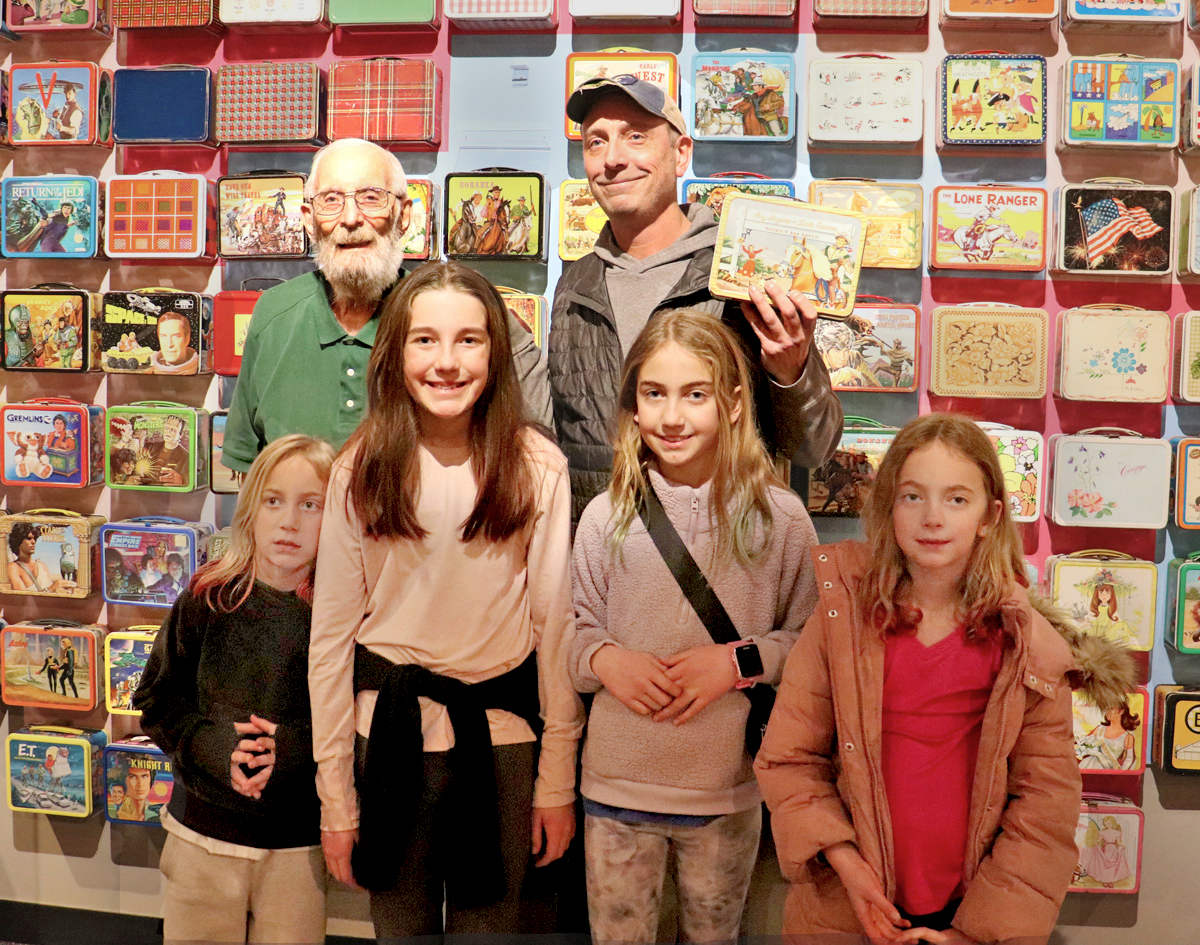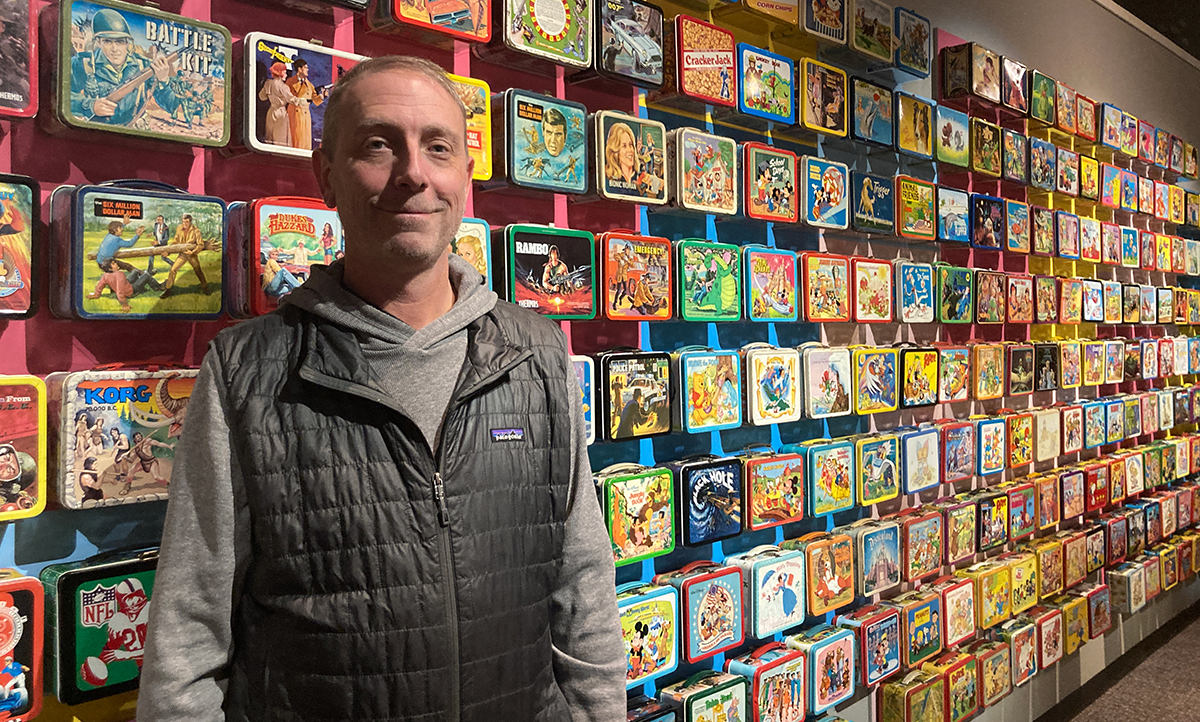Featured Testimonial About Creighton University
I wanted to share this with the world.

By Micah Mertes
Creighton alum and adjunct professor Mark Kelehan, BSBA’97, has collected about 1,000 lunchboxes and just as many pieces of original production artwork from the companies that made those lunchboxes. Much of his collection is now on display at The Durham Museum through Sept. 3, in an exhibit called “The Lunchbox: Packed with Pop Culture.”

More than 500 lunchboxes from “the golden era” — the 1950s to the 1980s — line a single wall of the exhibit. Metal lunchboxes, plastic lunchboxes and the (more rare) vinyl lunchboxes, covered in the art and culture of sci-fi sagas, Saturday morning cartoons and the six-shooter-slinging heroes of a time long past, when children cared about Westerns. Covers range from Superman to Star Wars, from The Beatles to Vinny Barbarino.
"I'm so grateful to the staff and crew of The Durham Museum," Mark says. "They took a chance on me and my exhibit idea, and they designed and installed the exhibit beautifully. I'm really excited for people to see this."
* * *
In 1994, Creighton business student Mark Kelehan was walking around a flea market in Radial Social Hall near Saddle Creek when he spotted the lunchbox that launched a lifelong passion.
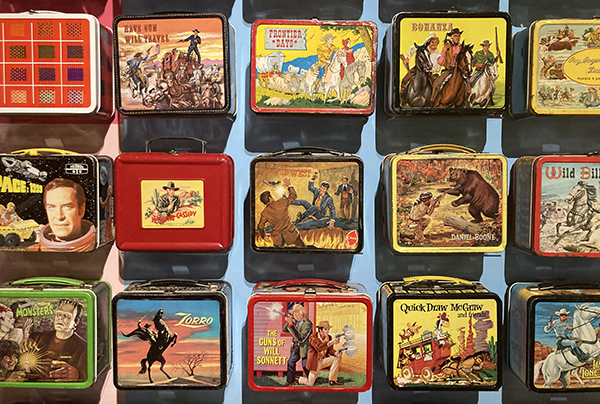
It was a 1980 Pac-Man metal lunchbox, a little beat up for $15, but he bought it anyway. That lunchbox sparked something in Mark. Some of it was just common nostalgia. He was a child of the ’80s, after all. He and his brothers had grown up playing Pac-Man on the Atari. He’d used a brown bag for all his school lunches and had always wanted a lunchbox himself.
But the reasons ran deeper for Mark. That Pac-Man lunchbox stood for something else — the American pop culture his childhood mostly lacked.
Though he was born in America, Mark grew up mostly in Germany. His father was in the army, and their family lived in Munich. Before coming to Creighton, all Mark’s memories of the U.S. were from before kindergarten or the occasional holiday trip to see family in Omaha.
“Omaha was America for me,” says Mark, now a general director in marketing and sales at Union Pacific Railroad and a Heider College of Business adjunct professor (he teaches a finance class on investment banking).

“I loved coming here and seeing everything open 24/7. I loved all the American stuff, even the commercials and the gas stations. Whenever we were in Omaha, my brothers and I would load up on things like Big League Chew and Nerds candy and take it all back to Germany with us.”
It’s either ironic or absolutely fitting that someone who grew up longing for American pop culture would go on to create the ultimate tribute to it.
* * *
The new Durham Museum exhibit The Lunchbox: Packed with Pop Culture shows everything that Pac-Man lunchbox led to.
Since 1994, Mark has been building his collection. It started with flea markets and thrift stores and garage sales before progressing to eBay and (later) Facebook. At about 1,000 lunchboxes, Mark’s collection is up there with some of the largest in the world. (He estimates he's in the top 10% of collectors.) Having more than 400 lunchboxes puts him in the "Heavyweight Boxer" category of collector.
(This collection — with somewhere between 3,000 to 5,000 lunchboxes — is the largest on record. Mark actually knows this collector and has purchased many items from him.)
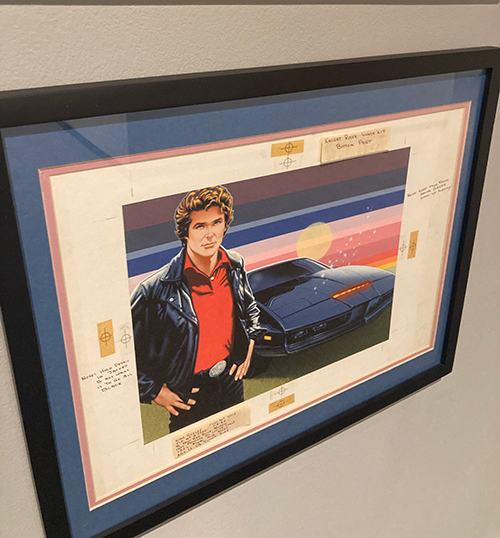
But lunchboxes were just the start for Mark. His collection also includes more than 1,000 pieces of rare, preserved production art paintings used for the final product, plus original proofs, metal production sheets, licensing contracts, interoffice memos and much more.
Given that the lunchbox companies trashed about 80% of their production work, Mark’s collection of it is, by his estimate, the largest private collection in the world and one of the most comprehensive collections of lunchbox artifacts overall.
It's these materials that really tell the story of the lunchbox, that really show how it intersects with so many other histories. Mark sees in the lunchbox a lens through which we can look at both 20th-century American pop culture and 20th-century American business.
“I was a business major (finance and international business), so I love digging into this stuff,” Mark says. “It tells a story no one really knows, of a high-stakes industry and the illustrators, contract lawyers and manufacturers under pressure to put out millions of lunchboxes every year.”
The Durham exhibit shows not just Mark’s collection of lunchboxes and production art but the lifetime of expertise he’s accrued — the result of countless hours of on-the-ground research at the Smithsonian, in the archives of the lunchbox companies themselves and speaking with lunchbox illustrators and other former employees.
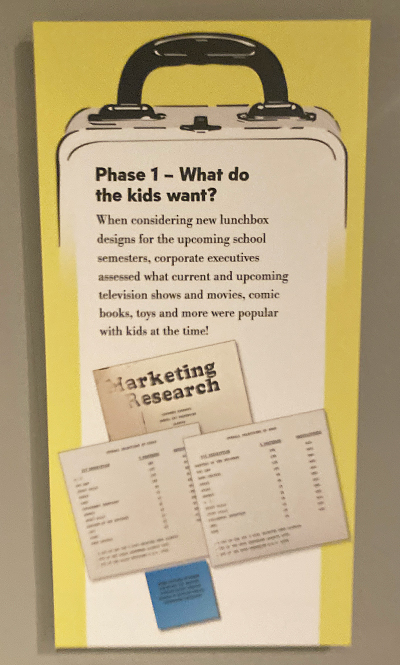
With some help from the Durham, Mark wrote an abridged history of the lunchbox that plays out across the exhibit. Info cards include … bios on the industries’ major players and pioneers. A primer on the difference between “antiques” and “collectibles.” The three main phases of lunchbox creation — marketing research, licensing rights, production. The rise of the big two lunchbox companies, Aladdin and Thermos L.L.C.
• Did you know the first licensed lunchbox character was Mickey Mouse in 1935 but that it wasn’t until the 1950 launch of the first licensed TV character, Hopalong Cassidy, that the lunchbox phenomenon took off?
• Did you know the first lunchbox marketed for school children (in 1914) was a leather-cased luxury item that cost $3.50 (or $104 adjusted for inflation)? Before then, children used old tobacco tins and cookie jars as the first form of school lunchboxes.
• Do you know why they stopped making metal lunchboxes? Lore has it that a group of Florida parents petitioned to have them banned because their children were clobbering (and injuring) each other with them. The more likely reason, Mark says, is that plastic lunchboxes were just cheaper to make.
Mark knows there's so much more he can do with this, both his knowledge and the collection itself.
He's now in talks to create a book or two on the topic of lunchboxes. Possibly a colorful coffee table book. Or perhaps one delving deeper in the history and inner workings of the lunchbox industry. Or maybe both books.
Mark used his business expertise to successfully pitch this exhibit to the Durham. Next up, he plans to take his collection on the road as a traveling exhibit after the Durham exhibit ends.
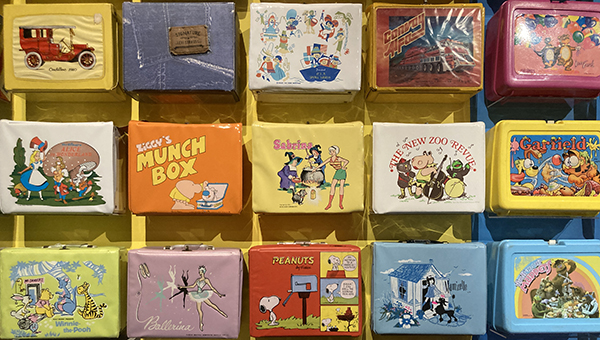
“The Durham Museum showed me what's possible with this collection and made me feel even more confident that it will appeal to people everywhere, people of all ages,” Mark says, walking around his Durham show a few days before its launch.
As if to prove his point, an older couple walked up to him after previewing the exhibit. They told him …
“I’ve seen all the things I used to watch on the Saturday shows.”
“There’s a lot of color up on that wall.”
* * *
Does the man with 1,000 lunchboxes have a favorite one? No, but he has favorites.
Many of the items in his collection are valued at well over $10,000. But those aren’t necessarily the lunchboxes he loves most. His favorites are personal. Each comes packed with memories.
• His KISS lunchbox connects to one of his earliest memories of America. He was four years old, it was raining, and he was out on the driveway bawling his head off because he couldn’t go to the KISS concert with his older brothers.
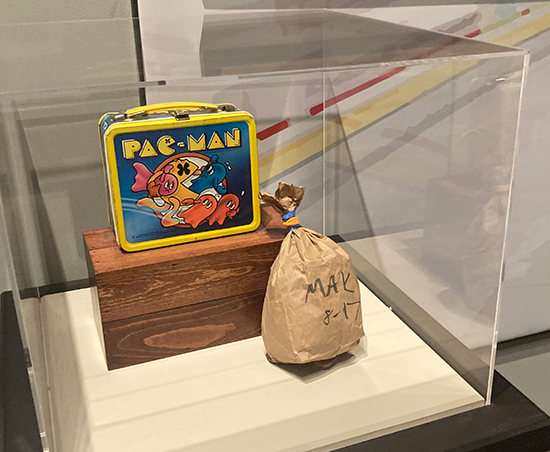
• His Project Shuttle space age lunchbox was a prototype, probably the only one still in existence. Mark had the Aladdin production artwork, but he searched for the actual item for nearly a decade. When this Holy Grail (or “Holy Pail,” as the lunchbox collector community calls them) popped up in a Facebook group, Mark bought it up fast.
• And of course, there’s the Pac-Man lunchbox that started it all. A version of that lunchbox gets its own display case in the exhibit, paired up with a brown bag with “MAK” and “8-17” written on it. Those are the initials of Mark’s mom, Mary Ann Kelehan, and the date she passed away, Aug. 17, 2020. (Mark says he was walking into the Harper Center to teach his very first class at Creighton when his brother called to tell him the news.)
The Lunchbox exhibit is perhaps as much as anything a tribute to her. Mary Ann was an avid collector of all kinds of things who loved taking her sons to scour thrift stores and flea markets in search of hidden treasures.

Mary Ann also took care of Mark's father, Michael, who has dementia. When she passed away, Mark took on his father's care.
Michael's memories come and go, but Mark wants to continue sharing every moment he can with him.
On the eve of his exhibit’s opening, Mark and his father (who was once a Creighton student himself, by the way), honored Mary Ann by placing a version of her own favorite lunchbox as the final piece on the wall of 500. It was a Roy Rogers and Dale Evans Double R Bar Ranch metal lunchbox that Mary Ann had growing up in Omaha.
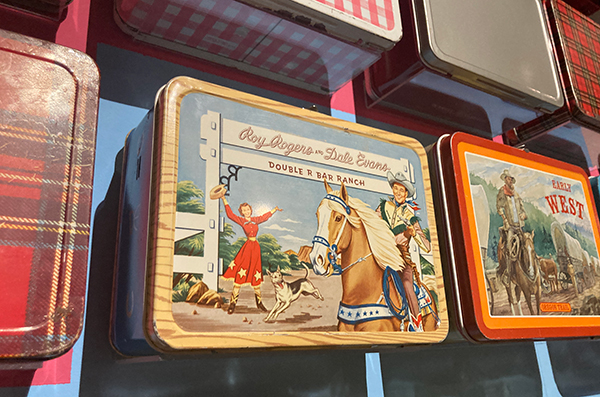
Mark fought back tears as he completed the exhibit and talked about his mom.
“She was the one who got me into collecting,” he says. “So much of this collection is for her because she made me want to do something with this thing that I was so passionate about and not just let it sit in my garage or basement never to be seen by anyone. I wanted to share this with the world.
“All you can do is take what you care about, tell the story of it the best you can and see if it resonates with people. I think this will.”
* * *
Learn more about the Durham exhibit here.
Have questions or comments for Mark? Contact him at mak.lunchbox@gmail.com.
